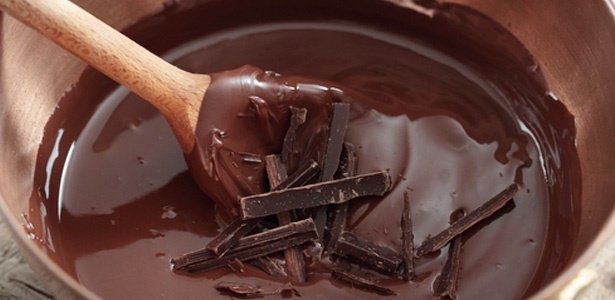Chocolate is a quick and beautiful way to decorate cookies, desserts, cupcakes and cakes and just plain delicious on its own. Here are a few tips and tricks to successfully working with chocolate.
READ: Meet Anthony Gird, Co-founder of Honest Chocolate
When melting chocolate on the hob, place it in a ceramic or Pyrex bowl, and heat gently over a bain-marie (pot of simmering water). Don’t allow the water to boil too vigorously or you run the risk of getting steam in your chocolate. Stir it occasionally as it melts. Do not use a metal bowl as this may lead to hot spots that can overheat the chocolate.
Melt the chocolate in the microwave, by placing the chocolate in a ceramic bowl and heating on defrost or 30% power and stirring every 30 seconds until the chocolate is melted.
Chocolate bars (like the ones you purchase in a supermarket) are made of chocolate that has already been tempered or has a high vegetable fat content to make it more stable. This type of chocolate can be melted and used straight away without tempering, as long as it is not overheated while it is being melted.
Tempering chocolate
Un-tempered chocolate is available from specialty baking and chocolate shops. This chocolate must be tempered before it can be used, or it won’t set. Tempering can be a difficult process, and as the composition of each chocolate varies in sugar and butter fat, check the manufacturer’s instructions for the recommended tempering temperatures.
For successful tempering, there are many methods, either melting a portion of the chocolate and adding in the remaining un-melted chocolate (the seed method), melting the full quantity of chocolate and pouring it out onto a cool marble block and stirring it until it cools and a variety of mechanical methods using special machines. In all cases the temperature needs to be carefully controlled and the mixture must be stirred constantly.
Test the chocolate by placing a small amount of chocolate on a piece of wax paper and if it sets within a couple of minutes (at room temperature) then your chocolate is ready to use.
Chocolate quality it determined by the amount of cocoa solids and cocoa butter in the chocolate. Cocoa solids are similar to cocoa powder and lend dark chocolate its distinctive bitter taste. Cocoa butter is a type of fat extracted from the cocoa bean, and good quality chocolate will contain a higher percentage of cocoa butter. Whereas cheaper cooking chocolates will contain little or no cocoa butter; the fat percentage will be made-up of hydrogenated vegetable fat instead. Cocoa butter melts at a lower temperature so the chocolate will be less stable in warmer climates, but will have a real “melt in your mouth” feel to it.
White chocolate can be coloured but only with powdered or oil-based colourants as water-based or gel colours can introduce tiny quantities of water into the mixture causing it to seize if you are not careful.
Chocolate that has been slightly overheated can be brought back from seizing by adding a few drops of oil or a knob of butter. Once it has gone all the way to the lumpy stage it is not possible to save (sadly).
Chocolate is easy to pipe and you can even use a small sandwich bag as a piping bag, if you don’t want to fold a paper piping bag. Simply place the melted (tempered) chocolate into a bag, tie a knot in the top of the bag and snip a small hole in the corner of the bag. Pipe directly onto your cake or cookies or pipe decorations onto a piece of wax paper and leave to set then place these on your cakes or desserts.
To see Food24’s favourite chocolate recipes, click here.

